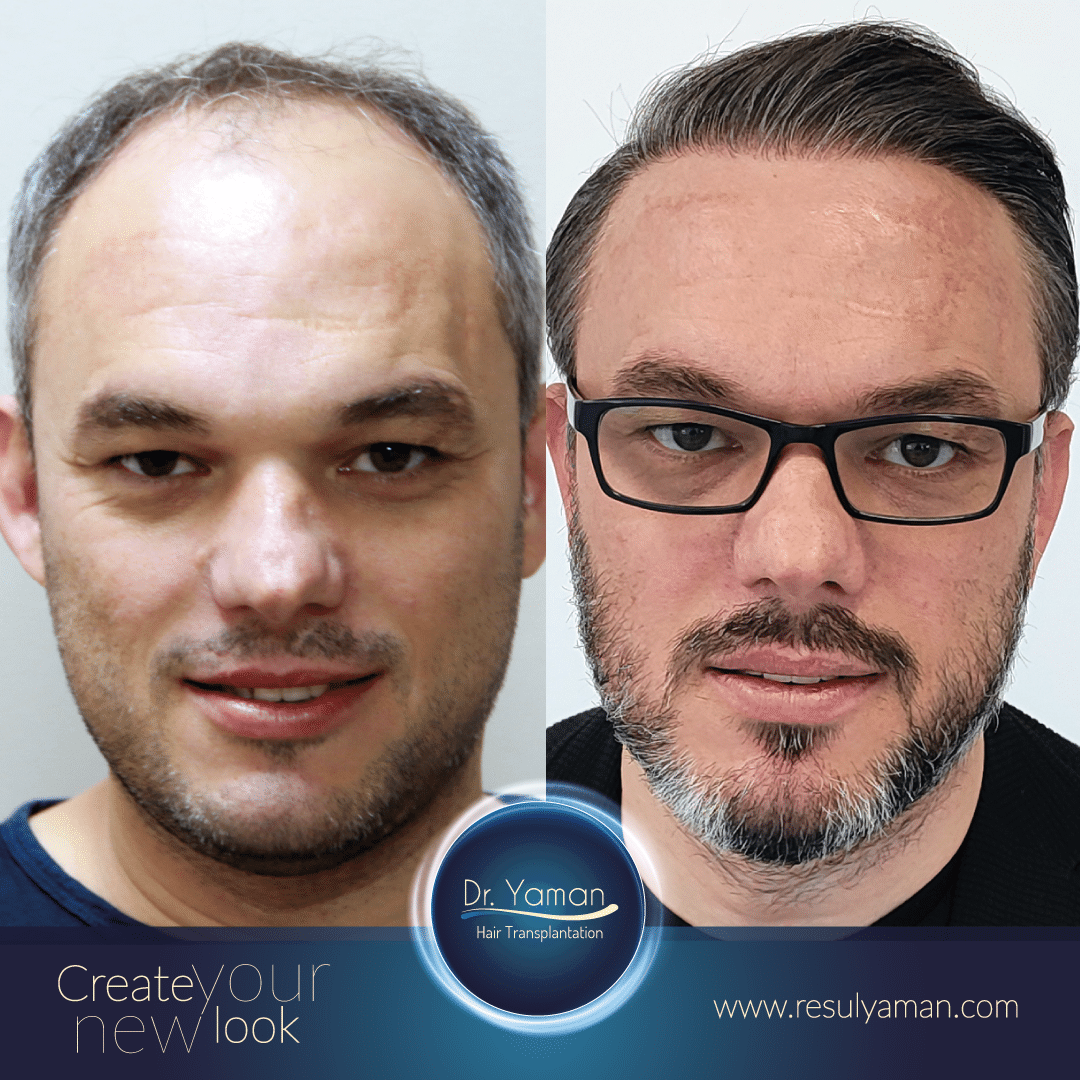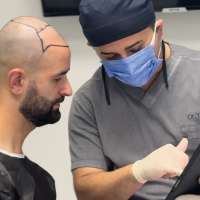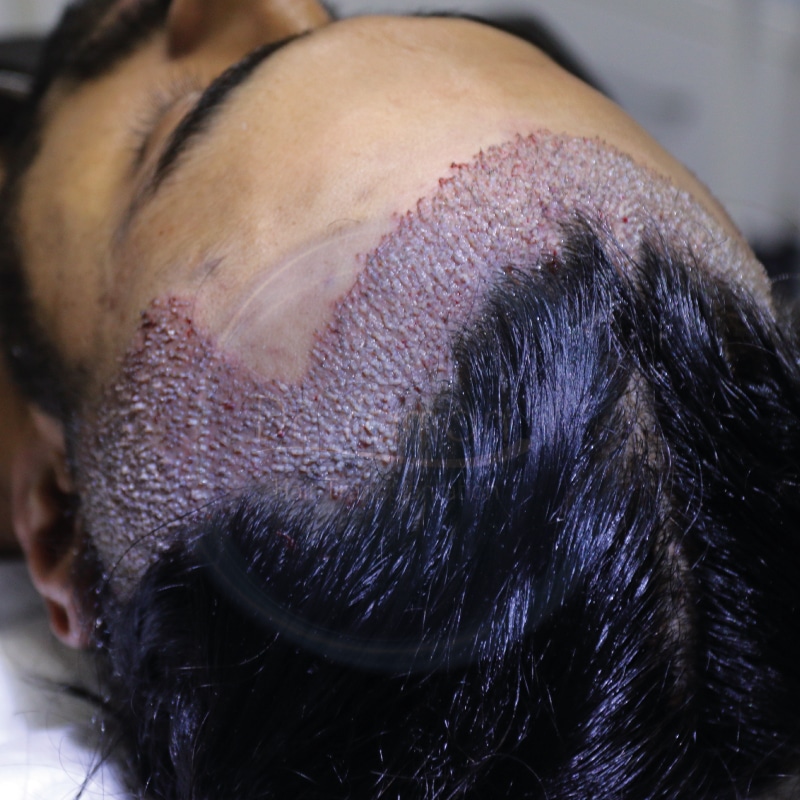A recurring question we get relating to hair transplant surgery is how long a patient has to wait to see results. We understand the importance of this – hair loss can affect your confidence and if you are spending money and time to get the surgery you want some assurance that you will see a difference!
To provide a quick answer, you can generally expect to have full hair growth after 12 months. However, it is more complex than that and there are many factors involved.
The results of hair transplants are also dependent on the individual as you can see from our hair transplant Turkey before and after pages. For full insight, we break down the post-surgery phases you can expect and what results are presented at each one below.
The Typical Post-Surgery Process
As we mentioned before there is variance in the timeframe for results depending on the individual patient. There are generally five post-surgery stages, however, that occur and dictate the results you can see.
Phase 1 – Initial recovery after surgery (up to 10 days)
The surgery itself is typically performed in sessions of up to 2-4 hours and depending on how many grafts you require, there could be multiple sessions. Local anesthetic is used therefore you are not put to sleep and are awake for the entire procedure.
Immediately after you can expect redness on your scalp and potentially some swelling around the forehead and your nose. The swelling usually subsides after 2-3 days and the redness can last for up to 10 days.
Scabs and crust may also form around the follicles and donor area but these will disappear after 4-5 days.
Depending on your employment you could be back at work in as little as 2-3 days but a full recovery time where there are no visible marks is usually 7-10 days. During this initial period, you will not notice any hair growth from the newly transplanted follicles.
Read More: Non-Surgical Alternatives to Hair Transplant
Phase 2 – Potential “Shock Loss” (around the 1-month mark)
Shock Loss is a common occurrence after hair transplant procedures and it isn’t anything to worry about. The best-case scenario is that you don’t experience any shock loss at all, but it can happen.
This is where the transplanted hair falls out around the peripheral edges of the transplanted part of the scalp as a result of tissue damage and a lack of oxygen being supplied to the transplanted hairs.
This is known as a reactionary process and is a direct result of the hair transplant procedure and typically occurs 3-4 weeks after the surgery.
Treatments can be used to limit shock loss like scalp massaging to improve blood flow and specialist medication.
Phase 3 – Initial Re-growth (around the 3-4 month mark)
After the shock loss phase, the transplanted hair will start to grow back. Initially, the hair will be fine and not too thick as the roots and follicles are still being established in their new location.
However, around 3-4 months the hair growth will start to improve and you will notice a decent difference compared to the shock loss period.
Also Read: How Does Age Affect the Outcome of Hair Transplant Surgery?
Phase 4 – Improved hair density (around 6 months)
After six months we get to an exciting part of the process as you should start to see improved hair density. This is the stage where the transplanted hair starts to grow more, thicken out and give greater coverage.
This stage continues anywhere between six months to one year and it is during this time that you can also start styling your hair. Compared to the initial period you should notice a large difference and reap the benefits of having the hair transplant procedure.
Phase 5 – A full head of hair (around 12-15 months)
Usually, you can expect to see a full head of hair and complete growth after 12 months. There are plenty of cases where the transplanted hair has grown back quicker than this but this depends entirely on the individual and how they react to the surgery.
After 12 months, the transplanted hair has had enough time to grow and thicken and it should look fantastic. The hair will look natural and blend in perfectly with the rest of your head and you can cut and style it however you wish!
FUE hair transplants also give fantastic long-term results and you can expect your hair to stay in great shape for decades to come. Transplanted hair should not fall out over time, and the individual follicles will essentially follow the natural cycle of hair growth.
The transplanted hair will also act like normal hair in that it is subject to bleaching so it will turn grey as you get older!
This is part of the natural lifecycle of hairs and it isn’t something we have managed to combat yet except with artificial dye! Natural bleaching is desirable, however, as it would look strange if part of your hair retained its original color while the rest of your head greyed!
Hair Transplants – Long but Life-Changing Procedures
As you can see you cannot expect immediate results after your hair transplant and it does take time for the transplanted hair to fall into its typical growth cycle.
Please note that the time it takes to see results can vary depending on the individual and there are many cases from our hair transplant before and after shots where full hair growth is achieved in as little as nine months.
 WhatsApp
WhatsApp Get Mail!
Get Mail!
 English
English Italiano
Italiano Español
Español Türkçe
Türkçe Português
Português Français
Français Deutsch
Deutsch عربي
عربي






